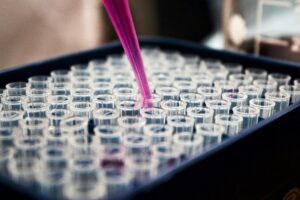Gas chromatography-ultraviolet spectrometry (GC-UV) is an analytical technique that combines the separation capabilities of gas chromatography with the high sensitivity and specificity of ultraviolet (UV) detection. It is commonly used to identify and quantify the components of a mixture, and it has a wide range of applications in the fields of chemistry, biology, and environmental science.
GC-UV has several advantages over other analytical techniques, making it a popular choice for many applications. Some of the main advantages of GC-UV include:
- High sensitivity: GC-UV is highly sensitive and can detect trace levels of compounds in a sample. This makes it particularly useful for the analysis of complex samples or for the detection of trace contaminants.
- High specificity: GC-UV is highly specific and can distinguish between closely related compounds or isomers. This allows for accurate identification and quantification of individual components in a mixture.
- Wide range of applications: GC-UV is suitable for the analysis of a wide range of compounds, including volatile and semi-volatile organic compounds, and it has a wide range of applications in the fields of chemistry, biology, and environmental science.
- Rapid analysis: GC-UV allows for rapid analysis of samples, with results typically available within a few hours. This makes it a useful tool for high-throughput applications.
- Robust and reliable: GC-UV systems are robust and reliable, with low maintenance requirements and a long lifespan. This makes them a cost-effective choice for many laboratories.
GC-UV is a powerful and widely used analytical technique that has a wide range of applications in the fields of chemistry, biology, and environmental science. Its high sensitivity, specificity, and wide range of applications make it a valuable tool for the analysis and identification of compounds in a variety of samples.
In addition to the advantages mentioned above, there are a few other benefits of GC-UV that are worth noting:
- Non-destructive analysis: GC-UV is a non-destructive analytical technique, which means that the sample is not consumed or altered during the analysis process. This allows for the analysis of small or valuable samples, or for the analysis of samples that need to be preserved for further analysis.
- Automated analysis: Many GC-UV systems are automated, which allows for the rapid and consistent analysis of multiple samples. This can greatly increase the efficiency and throughput of the analysis process.
- Easy to use: GC-UV systems are relatively easy to use and do not require specialized training or expertise to operate. This makes them accessible to a wide range of users, including those in academia, industry, and government.
- Low cost: While GC-UV systems can be expensive to purchase, they have low operating costs and low maintenance requirements, which makes them a cost-effective choice for many laboratories.
- Wide availability: GC-UV systems are widely available and can be found in many laboratories around the world. This makes it easy to access the technology and expertise needed to perform GC-UV analysis.
GC-UV is a powerful and widely used analytical technique that has many advantages over other analytical methods. Its high sensitivity, specificity, wide range of applications, and low cost make it an attractive choice for many laboratories and research projects.
One of the main advantages of GC-UV is its high sensitivity and ability to detect trace levels of compounds in a sample. The UV detector is highly sensitive and can detect compounds at concentrations as low as parts per billion or even parts per trillion, making it ideal for the analysis of trace impurities or contaminants. Another advantage of GC-UV is its versatility. The technique can be used to analyze a wide range of compounds, including hydrocarbons, halogenated compounds, alcohols, aromatics, and many others. It is also suitable for the analysis of a variety of sample types, including gases, liquids, and solids.
GC-UV systems is fast and efficient, with analysis times ranging from a few minutes to an hour or so, depending on the complexity of the sample. This makes it a useful tool for routine analysis and quality control in industries such as petrochemical, environmental, and food and beverage. LABIO GC-UV systems offers a number of advantages for the analysis of volatile and semi-volatile compounds, including high sensitivity, versatility, and speed. It is an important tool for many industries and is widely used for the analysis and identification of compounds in a variety of samples.
Another advantage of GC-UV is its ability to provide detailed structural information about the compounds being analyzed. The UV detector is able to detect the presence of specific functional groups in a compound, such as double bonds, aromatics, and halogenated compounds. This allows for the identification of compounds based on their UV absorption spectra, which can provide valuable information about the structure and properties of the compound.
Overall, the combination of gas chromatography and ultraviolet spectroscopy in the GC-UV method provides a powerful tool for the analysis and identification of volatile and semi-volatile compounds. It offers a number of advantages, including high sensitivity, versatility, speed, and the ability to provide detailed structural information about the compounds being analyzed.




